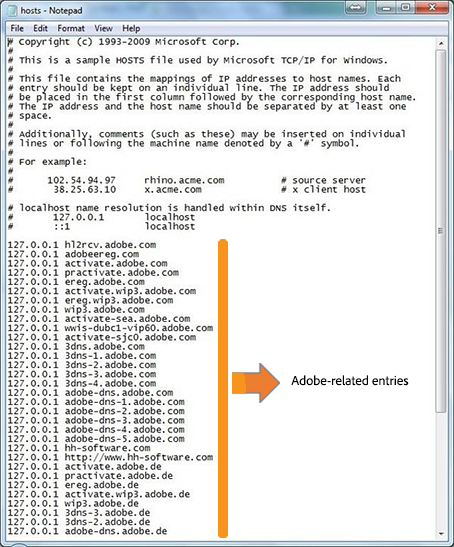
Feb 7, 2015 - The Hosts file is a static name-resolution table that overrides the system's DNS server settings. It can be edited using any text-editor such as.
The hosts file is used to map hostnames (in other words domains) to IP addresses. With the hosts file you can change the IP address that you resolve a given domain name to. This change only affects your own computer without affecting how the domain is resolved worldwide. This is particularly useful when you wish to see how a website will look like when hosted on a different server without making any DNS changes to your domain. The location of the hosts file, depending on the operating system that you are using, is: • Windows - SystemRoot > system32 > drivers > etc > hosts By default the system root is C: Windows, so if you are using Windows, your hosts file is most probably: C: Windows System32 drivers etc hosts) • Linux - /etc/ hosts • Mac OS X - /private/etc/ hosts Let's say that you wish to resolve yourdomain.com to the IP address 1.2.3.4. In this case you would need to open up the hosts file with a text editor and append the following line. 1.2.3.4 yourdomain.
Com (Note: Make sure that you don't have any # signs in front of the IP address as they will deactivate this entry) This will 'tell' your computer to resolve yourdomain.com to 1.2.3.4. Once you do that you may need to, afterwards, if you try to reach your domain in a browser it should take you to the site hosted on the server with IP 1.2.3.4. More detailed instructions on how to locate and edit the hosts file on different operating systems are available below: Windows 8 and 10 • Press the Windows key (previously Start menu). • Use the Search option and search for Notepad.
• Right-click Notepad and select Run as administrator. • From Notepad, open the hosts file at: C: Windows System32 Drivers etc hosts • Add the line and save your changes. Linux • Open up the Terminal. • Use the nano command line text editor, or a different one you have available to open up the hosts file. The command with nano is as follows (the command will require your Linux user's password).
What is hosts file and how does it differ from DNS? First of all, what is the hosts file, and how does it differ from the more commonly known DNS? The Domain Name System is the database that corresponds an IP address’ “dotted quad” numerical format with a website’s alphabetized web address. Artistic anatomy by dr paul richer pdf. It’s a giant directory of which name belongs to which IP address, like an online yellow pages. Your Mac’s hosts file, however, is localized to your own device, like a list of contacts in your phone: The web address acts as your contact’s name — that’s how you find who you want to talk to — and the IP address is their cell phone number, which is your actual way of getting in touch with them. How editing the hosts file works Editing your Mac hosts file is a bit like changing the phone number in your contact book.
If you save the contact details with the wrong name, well, it’s still going to connect to that person when you ring the contact. If, however, you entered an incorrect phone number in our contacts analogy, whether that’s an invalid number or one that links to someone else’s, then you have no chance of getting through to that particular cell phone. Editing the hosts file reroutes the IP address, but only from your own Mac. Entering the web address will bounce you to a different IP address of your choosing (and therefore a different website) or to an invalid IP, which will give you an error page on your browser that says it can’t find the site you’re looking for. Can it boost my Mac's speed?
